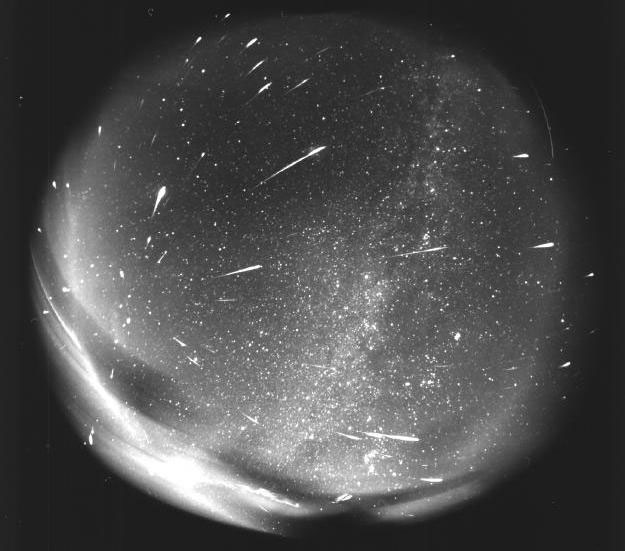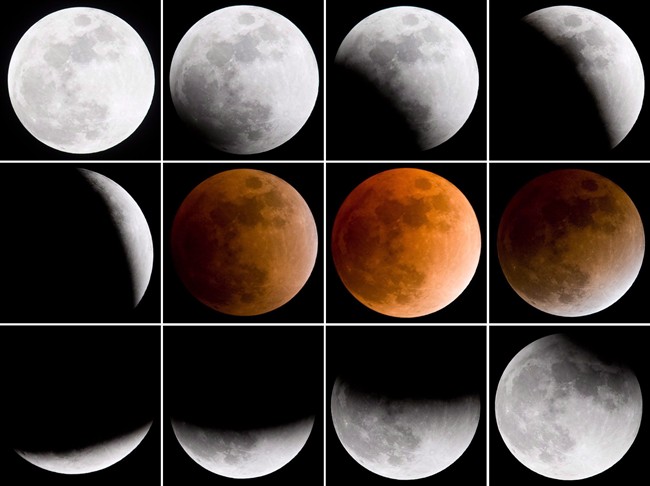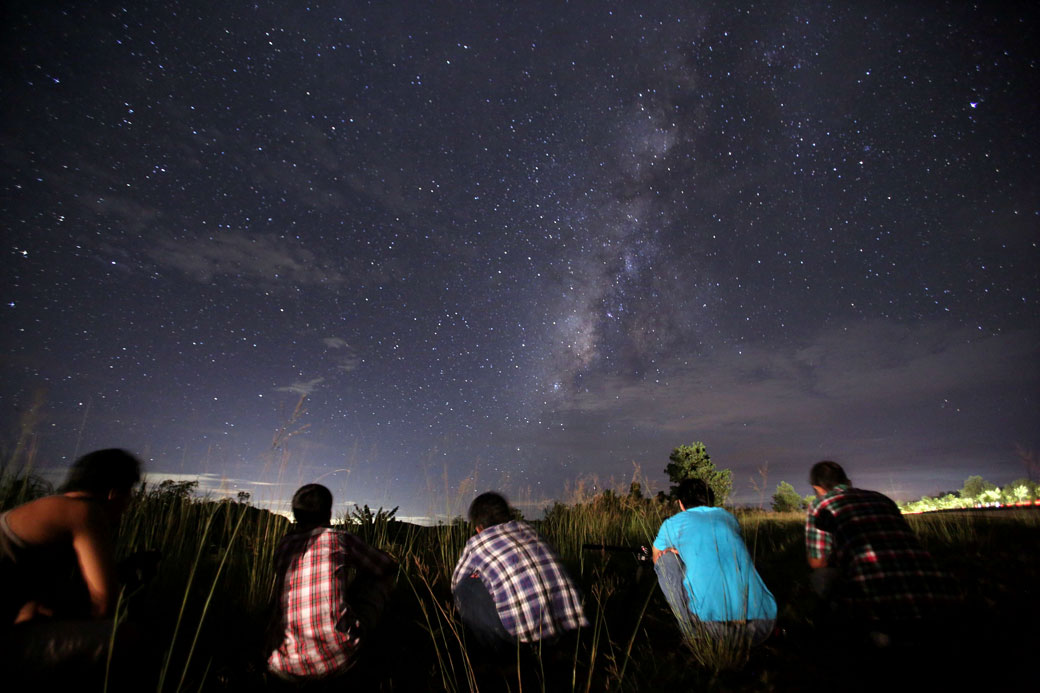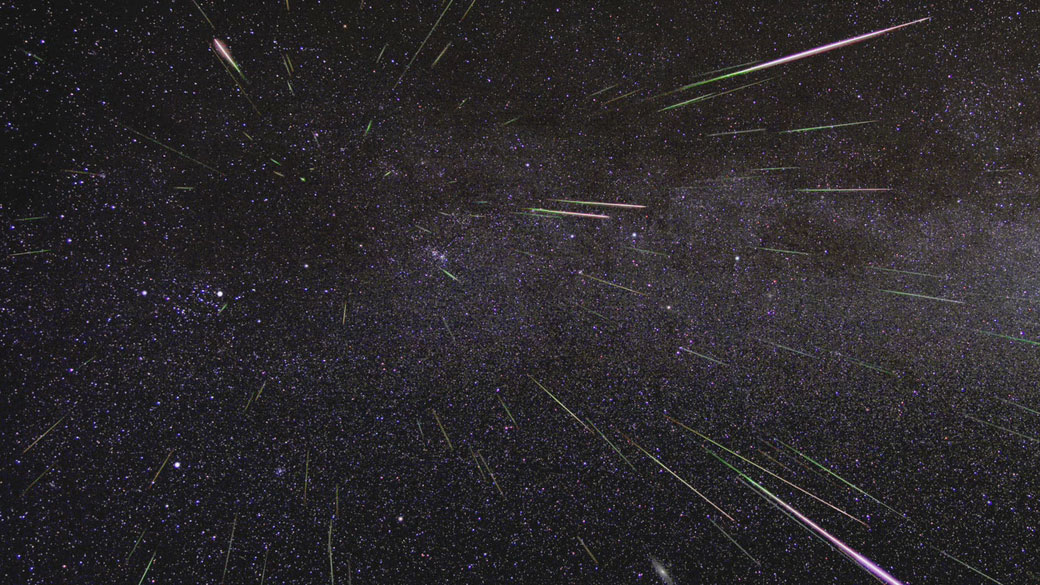TORONTO – As we head into the new year, there are a lot of reasons to keep looking up.

READ MORE: NASA spacecraft readies for rendezvous with dwarf planet
Every year new astronomical treats grace our sky. Here’s what we can look forward to in 2015.
1. February 20: Venus, Mars and the crescent moon
If you’ve had clear skies (a rarity these days), you may have noticed an unusually bright “star” in the west just after sunset. It’s not a plane or a UFO, but Venus.
For several months of the year, Venus is a “morning star.” But in the winter months, the brilliant planet becomes an “evening star.” And it’s impossible to miss. That’s due to Venus’ close proximity (it’s only about 240 million kilometres from Earth) and extremely reflective cloud-cover.
On Feb. 20, Venus gets a little company in the evening sky. A conjunction — or meeting of celestial bodies in the sky — of Venus, Mars and the thin crescent moon will make for a pretty impressive site.
Astronomers use degrees to measure distances in the sky. The width of your pinky held at arm’s length is about one degree. Well, during this conjunction, the moon will be just a half-degree from Mars and a degree from Venus. To enjoy the show, you just need to step outside. If you have a pair of binoculars, you can get a close-up view.
2. April 4: Total lunar eclipse
In 2014, we were treated to a year of eclipses — four in total — and all of them visible from Canada. This year Canada gets two out of four eclipses. Still, not bad.
The lunar eclipse on April 4, will be visible across all of Canada in one stage or another. As with the lunar eclipses of 2014, the best spot to be is western Canada where the entire eclipse will be visible.
As you head east, however, the eclipse will be visible at moonset. In eastern Canada, the moon sets with the partial eclipse underway.
3. June 30: Venus and Jupiter pairing

Get breaking National news
If you missed the conjunction of Venus, Mars and the moon in February, here’s a chance to catch another meeting of the planets.
This time it’s Venus and Jupiter, two of the brightest planets in our sky.
After the sun sets on June 30 head outside and look to the west. The planets are just 0.3 degrees apart. Try grabbing a pair of binoculars to get a close-up view. You may even catch four of Jupiter’s moons.
4. July 14: New Horizons arrives at Pluto
It may have lost its full-fledged planetary status, but Pluto still has a place in the hearts of many.
Part of the reason may be that Pluto is the one (ex)planet that humans have yet to see up-close. There has never been a robotic mission to the tiny dwarf planet — until now.
READ MORE: New Horizons spacecraft awakens, ready to shed light on far-off Pluto
NASA’s New Horizons spacecraft was launched in 2006, before Pluto lost its planetary status. Because of the need to traverse the great distance (Pluto is more than 5 billion kilometres from Earth), the spacecraft had to reach enormous speed. In fact, it’s the fastest spacecraft we’ve ever launched. For that reason, it won’t orbit the planet, but flyby, with its closest approach on July 14.
Though you won’t be able to look to the sky for this event, you can be sure that it will be covered by NASA as we get the best view ever of a celestial body that has eluded us since its discovery.

5. August 12/13: Perseids meteor shower
One of the best meteor showers of the year peaks on the night of August 12/13.
The best part about this meteor shower is that it occurs two days before new moon, so the sky will be dark, giving us a better chance of catching fainter meteors. Typically, you can expect about 100 meteors per hour in dark locations.
READ MORE: The Perseid meteor shower: Here’s the best way to catch a ‘shooting star’
Another plus is that the peak of the shower occurs at 2 a.m. EDT rather than in the daytime for Canada. So make sure you mark this on your calendar. A summer meteor shower is always a perfect time to grab a blanket, head outside and just look at the stars.

6. Sept. 27: Lunar eclipse
The second total lunar eclipse of the year occurs on the night of Sept. 27 and again, Canada is the place to be.
On the west coast, the moon rises just before totality begins. But from about Winnipeg to the east coast, the entire eclipse will be visible.

And be prepared for a lot of hype about another “supermoon.” This so-called phenomena occurs when the moon happens to be at its closest during full moon. And this will happen less than an hour before mid-totality.
7. Dec. 14: Geminid meteor shower
Many people consider the Geminid shower to be the best of the year due to the often bright meteors that streak across the sky.
This year the shower peaks on the night of Dec. 14. However, unlike the Perseids of August, the peak occurs during daylight hours for Canada. But on the plus side, the new moon will have occurred on Dec. 11, meaning that you’ll have dark skies to catch some meteors.
And remember: the days leading up to and after a peak are a great time to keep an eye out as well.






Comments